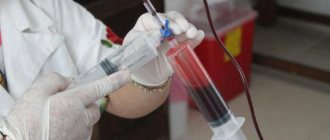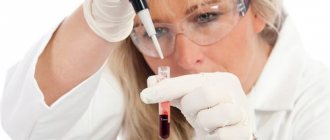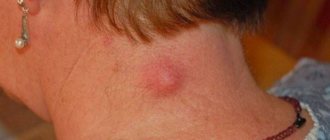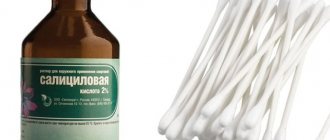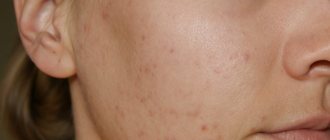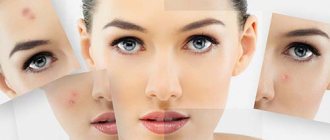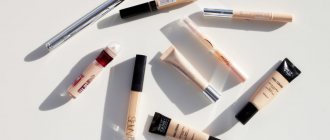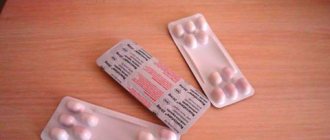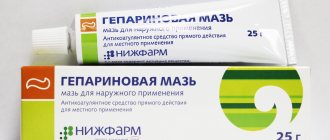Autohemotherapy is one of the methods for treating acne and pustular rashes on the skin in dermatology. The procedure involves transfusing blood from a vein into the buttock without further processing the liquid or mixing it with medications. Using your own blood eliminates the possibility of allergies or other acute reactions on the part of the patient’s body, therefore the method is considered one of the safest and most effective.
The procedure can be used independently or in combination with other therapeutic techniques and drugs to normalize the condition of the skin. Treatment conditions are determined by a dermatologist after an examination and additional tests.
In what cases is it used?
Blood transfusions for acne are used in the most difficult situations. Most often, the procedure is performed for moderate to severe acne. It is also indicated if other methods have not brought noticeable results.
Autohemotherapy is carried out when the immune system is significantly weakened, when the body cannot resist the development of bacteria. This can cause a lot of acne to appear.
In such a situation, the method will help to obtain a double effect - it will provide natural protection for the body and will help cope with acne.
So, the main indications for blood transfusion include the following:
- complex dermatitis;
- frequent appearance of subcutaneous acne, furunculosis;
- long-lasting rashes;
- slow skin restoration after acne elimination.
The technique can be used if other treatment methods have not given the desired results. It is often complemented by other therapies. These include the use of homeopathy, exposure to ultraviolet radiation, and ozone therapy.
How it works
The procedure involves transfusion of the patient's own blood. Thanks to this, it is possible to stimulate the functioning of the immune system. The blood of a person, which is transfused to himself, does not provoke negative reactions in the body.
However, in addition to useful substances, the blood contains toxic elements that are formed as a result of the vital activity of cells. They are the ones that provoke an immune response because they are foreign.
As a result, antibodies are produced in the body. This leads to the activation of natural protective functions. Their effect extends to the entire body. Thanks to this, a person has the opportunity to cope with rashes on his own, using the body’s reserves.
As a result, regression of acne is observed and skin restoration functions are normalized. This helps speed up the healing process of acne and prevent the formation of deep scars.
Additional measures
The appearance of boils on the skin occurs due to the activity of staphylococcus. These bacteria inhabit human mucous membranes and skin throughout life. This proximity, with a sharp decrease in immunity, leads to the development of furunculosis. Therefore, the main tool in the fight against the disease is a healthy lifestyle, fortified food and clean fresh air. It is important to avoid hypothermia, stressful situations and nervous breakdowns.
All these factors directly affect the state of immunity. If you do not take a comprehensive approach to improving the body's resistance, then furunculosis can easily become chronic.
In fact, blood transfusion for furunculosis in itself cannot rid a person of infectious processes. With this technique, it is recommended to carry out local therapy aimed at destroying the infection and eliminating the affected lesions on the skin. Antibacterial agents are used, such as alcohol, hydrogen peroxide, tincture of iodine. They should be used to wipe the boils daily, and this should be done from the edges to the center of the inflamed area of skin. The doctor may also prescribe broad-spectrum antibiotics to kill the infection in the body. Most often they are prescribed in the form of subcutaneous injections, the medicine is injected under the boil.
Furunculosis has the ability to become chronic
Methods of application
There are various methods of carrying out the procedure, each of which is characterized by certain features.
Subcutaneously
In this case, a certain amount of venous blood is taken from a person with a sterile disposable syringe and injected into his body subcutaneously. The blood that is taken from a vein is not processed in any way and no other components are added to it.
Read the causes of internal acne. How to remove acne on the back? More details here.
Intramuscularly
The regimen includes 10-15 daily injections, which are given continuously with a gradual increase in dose. On the first day, the doctor takes 1-2 ml of the substance and injects it intramuscularly into the buttock. Then the dose is increased by 1 ml every day.
Intravenously
In this case, ozone autohemotherapy is usually performed. Ozone has antiviral, anti-inflammatory and immunomodulatory properties. Most often it is administered intravenously. In this case, a useful dose of the substance is mixed with the blood and injected into a vein.
Treatment of furunculosis with local therapy
Local therapy consists of the use of antibacterial drugs. It is necessary to create an environment to destroy the infection. This can be wiping with alcohol or hydrogen peroxide, or simply an alcohol tincture of iodine. You can also use a special acne powder, which is sold at any pharmacy.
It is worth noting that it is strictly forbidden to squeeze out all boils, as this can lead to further infection. And these are various complications - phlegmon, abscess and others. Antibiotics are often used in the form of local blockades. But such procedures should only be done by a professional. Subcutaneous injections must be treated with increased responsibility, so do not experiment with this yourself without experience.
- Author: Boris
How did I become a doctor? Quite a difficult question... If you think about it, there was no choice. I was born into the family of a resuscitation doctor, and every day at dinner I heard my father’s story about how his day went. As a child, this all seemed fantastic, beyond reality. Rate this article:
- 5
- 4
- 3
- 2
- 1
(0 votes, average: 0 out of 5)
Share with your friends!
How is a blood transfusion done for acne?
To cope with the disease and improve the condition of the skin, you need to consult an experienced doctor.
General information
To ensure that a blood transfusion does not cause harm, it is very important to properly prepare for this procedure. Before the session begins, you need to take a blood test to detect infection.
The hemoglobin level must also be assessed. You can start the procedure only if there are no contraindications.
Application schemes
The most common method of carrying out the procedure is considered classic. In this case, from 5 to 25 ml of venous blood is taken from a person, which is immediately injected subcutaneously or intramuscularly into the buttock area.
The course of therapy includes 8-12 injections, which are performed with an interval of 1-2 days. If the procedure is insufficiently effective, the patient’s blood is subjected to different types of influences - irradiated with ultraviolet light, frozen, treated with ozone or laser.
Another method is stepwise autohemotherapy according to Reckeweg. It involves mixing blood for transfusion with various homeopathic remedies. The solution is introduced in several stages.
There are 2 methods of performing the procedure. In the first case, the patient is first injected with part of his venous blood, and the rest is mixed with a homeopathic remedy and injected again. This enhances detoxification of the body and helps deal with rashes.
According to the second method, you need to take a large syringe, draw 2-5 ml of venous blood and add homeopathic medicine. Then the syringe is shaken 10 times and the drug is administered subcutaneously or intramuscularly.
As a result, a little liquid should remain in the syringe, to which you should add a little homeopathic remedy. After which the updated solution should be shaken and you can inject again. The procedure is repeated at intervals of 4-5 days.
Therapy is carried out once every 6 months. A repeated course is necessary to prevent exacerbations of the disease. This is required for hormonal imbalance associated with pathologies of the endocrine system. Adolescents may also need a repeat procedure.
Contraindications
There are a number of reasons why autohemotherapy is undesirable and even contraindicated:
- in the presence of a chronic disease;
- oncology of various organs;
- pregnancy and breastfeeding;
- uterine and adnexal inflammations;
- infertility;
- menopause in old age;
- with low hemoglobin levels;
- not recommended for neuropsychiatric disorders;
- presence of arrhythmia;
- people who have had heart attacks or strokes.
Side effects
Autohemotherapy is used to correct the functioning of the immune system. Usually there are no side effects after it is performed.
Some people experience a slight increase in temperature, general weakness and chills. However, this is quite rare.
It is also worth considering that there are certain contraindications to blood transfusions:
- acute inflammation;
- oncological pathologies;
- pregnancy;
- lactation;
- complex chronic diseases.
Advantages and disadvantages
The procedure has many advantages and disadvantages. To decide to carry it out, you need to study the positive and negative sides.
The advantages of blood transfusion include the following:
- the procedure allows you to cleanse the body;
- with its help, the immune system is activated, which makes it easier to fight infection;
- Autohemotherapy allows not only to cope with acne, but also to eliminate chronic ailments.
At the same time, manipulation also has certain disadvantages:
- the procedure is not very well studied;
- blood in the muscles is absorbed rather slowly, which causes lumps or pain in the injection area.
Causes
Furuncle is an acute purulent-necrotic inflammation of the hair follicle and sebaceous gland, occasionally affecting nearby tissue. They can be located anywhere on the body where there are hair follicles (that is, with the exception of the palmar and plantar areas), but the most common location is the back, buttocks, face, neck, and forearms.
Among the causes of furunculosis, Staphylococcus aureus is the leader (rarely other microorganisms). It penetrates the hair follicle and causes purulent inflammation, beginning to actively multiply and secrete waste products. Necrosis of the follicle occurs, which affects neighboring tissues, increasing the affected area. This process often occurs in people with immunodeficiencies.
Recommendations
If lumps appear in the injection area, treatment should begin immediately. To do this, apply a heating pad to the affected areas, apply compresses to the back, and massage the affected areas. All these manipulations help avoid stagnation.
Blood purification through transfusion is effective in approximately 70-80% of cases. In other situations, no changes occur.
To improve your prognosis, you need to follow these recommendations:
- eat right - eat complex carbohydrates, eat fresh fruits and vegetables;
- observe the rules of hygiene;
- cleanse the skin and carry out the necessary cosmetic procedures;
- to live an active lifestyle;
- exclude the influence of irritating factors - these can be chemicals, harmful products, decorative cosmetics;
- provide access to oxygen, walk a lot.
It is important to monitor your body’s reactions and not ignore suspicious manifestations. Hemoglobin deficiency provokes general weakness, fatigue, nausea and acne. That is why it is so important to undergo a comprehensive examination in a timely manner.
Is it possible to carry out blood transfusion on your own?
Many patients, not wanting to be in a dermatovenous dispensary hospital, ask whether such treatment is possible at home. The answer will be yes. The main task during blood transfusion is to correctly take biological material from a vein and inject it into the buttock as quickly as possible. If you can cope with this yourself or you have medical staff at home, then treatment can take place at home.
Gloves and syringes must be disposable. It is necessary to monitor the time of withdrawal and quantity. If you are not sure that you can handle it on your own or cannot ensure complete sterility, it is better to contact the clinic. Animal hair, dust and some other everyday problems can negatively affect the procedure itself and cause complications or exacerbation of furunculosis.
Photo: Before and after
Blood transfusion is an effective procedure that allows you to cope with pimples and acne.
See what to do if an internal pimple in the ear hurts. How does calendula affect acne? Find out further.
How to remove acne spots on your face? The answer is here.
It is prescribed if other methods do not give the desired results. In this case, only an experienced doctor should conduct the session.
